Tangy lacto-fermented chilli lemon carrot sticks make a tasty probiotic-rich snack and have just enough kick. Learn how to make this easy small-batch ferment and prepare yourself to get addicted!
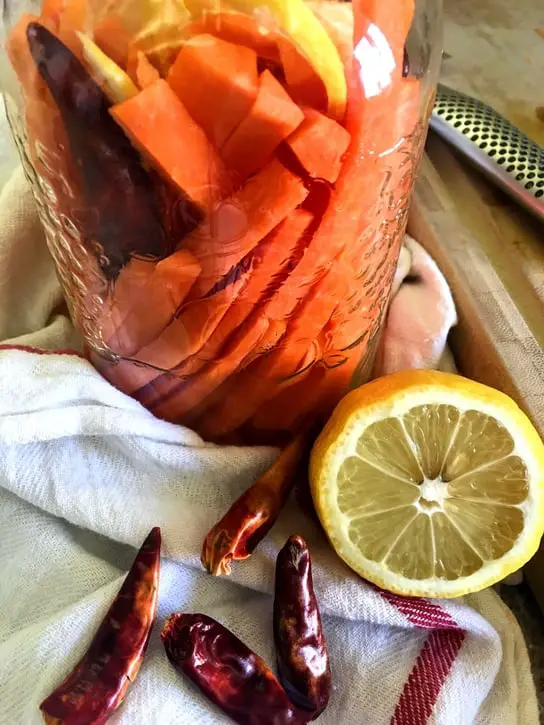
FERMENTED CARROTS: THE PERFECT SNACK
Not to knock regular carrot sticks, but lacto-fermented chilli lemon carrot sticks are a whole other ball game.
Do you know how carrots are brimming with vitamins? Well, fermenting them not only gives carrots a vitamin booster but also enriches them with probiotics.
Probiotics are key for a healthy gut and help to strengthen the immune system. Also, did I mention that they’re more delicious?
Lacto-fermented chilli lemon carrot sticks are still raw, which is why there are so many amazing benefits. Depending on how long you ferment them, the carrot sticks retain their crunch factor but are easier to chew.
My toddler has a hard time eating regular carrot sticks, but he has no problem when they’re fermented. In fact, he likes them more! And why wouldn’t he? They’re tangy and flavourful.
LACTO-FERMENTED CARROT STICKS VIDEO
Want to see just how easy it is to make this delicious ferment? Check out the video tutorial! If you like what you see, be sure to subscribe to my YouTube channel for more “silent film mode” demonstrations.
This post may contain affiliate links. This means that if you choose to purchase something after clicking on one of the links in this post, I may earn a small commission at no additional cost to you.
RELATED: Making Beet Kvass (an old-fashioned tonic)
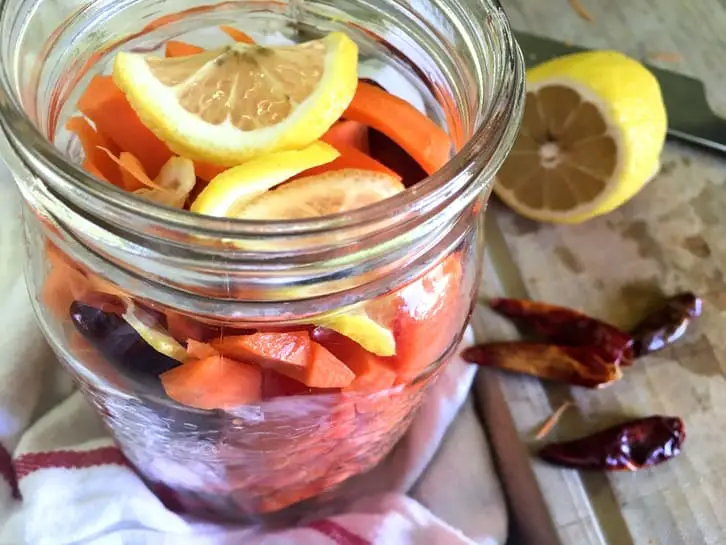
ARE YOU NEW TO FERMENTING?
If you’re brand new to fermenting, you might not even know what lacto-fermentation means.
Well, my friend, it occurs when naturally occurring yeast and bacteria (in the air, on your hands, and on the carrots, lemon and chillis) meet together to party with the natural sugars and starches present in the carrots.
Over the course of a few days, the microorganisms present in the carrots digest these very same starches and sugars, which transmute into carbon dioxide and lactic acid.
The lacto part, by the way, comes from lacto-bacilli, which are the good bacteria that make fermentation possible. Don’t be alarmed. We need good bacteria for optimal health!
Fortunately for you, these carrots are a good starter project, as is making small-batch sauerkraut and these jalapeño pickles. Want an even easier project? I don’t think it gets simpler than making your own milk kefir.
WHAT DO I NEED TO START FERMENTING CARROTS?
Good news: you don’t need much!
If you’re brand new to fermenting, I won’t ask you to go out and spend a bunch of money. It’s always wise to make sure you’ll take to a new skill before dropping your hard-earned cash on a fermentation kit that you’ll get rid of after an afternoon of reading Marie Kondo. Here’s what you’ll need…
A QUART/LITRE-SIZED MASON JAR
Everyone should have one of these! I regularly snatch them up when I spot them at the thrift store because they’re so useful. These jars are great for storage. I even freeze my homemade broth in mason jars!
WEIGHTS
Before I decided that fermenting was a skill I wanted to pursue, I DIY’d everything. These days I use glass weights designed to fit my mason jars and they are a joy.
It’s a bit of a pain McGyvering something that will keep everything submerged under the brine. That’s the golden rule, you know: “if it’s covered in brine, everything’s fine”.
Fill a small Ziplock bag with water or rocks and wedge that in the jar.
I used to fit a tiny water-filled jar into my mason jars.
Use your imagination. What will you come up with?
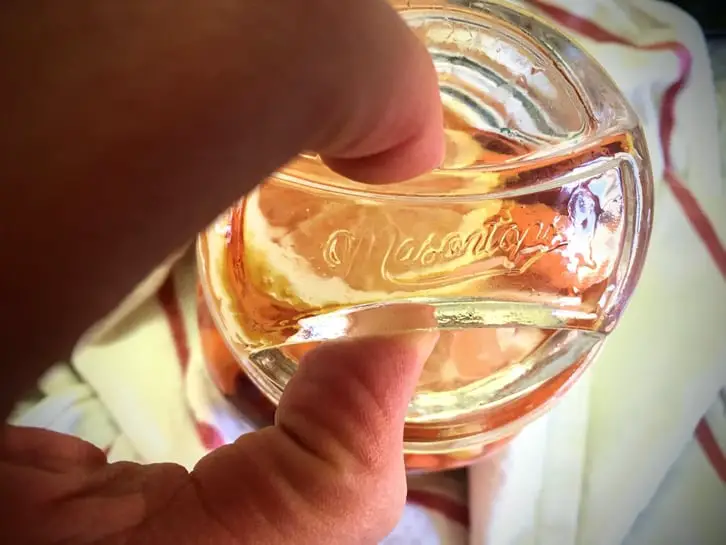
A LID AND SCREW TOP
Every mason jar comes with a lid and screw top. When the weight is on, cover that jar up to keep the ferment safe from contaminants. Be sure not to screw it on too tightly.
You want it loose, otherwise, disaster might strike.
Carbon dioxide is created during Lacto-fermentation, so it will need a way to get out. I use silicone airlocks that release the gas for me so I don’t need to worry about what my carrots are doing.
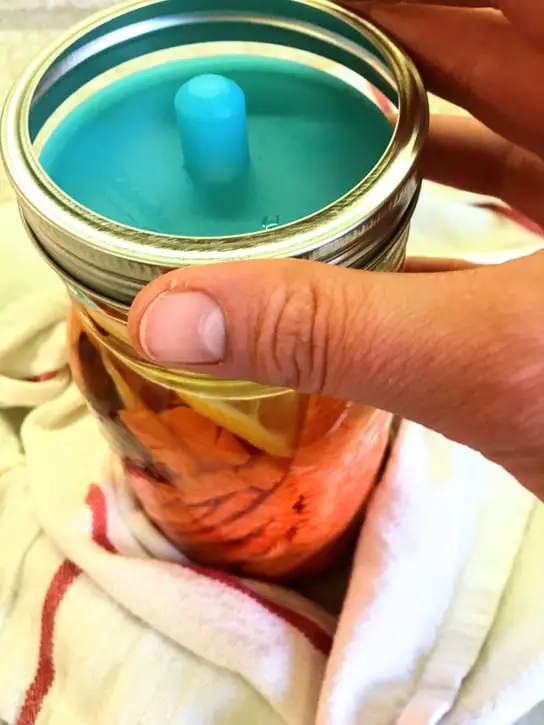
UNREFINED SALT
I swear by Celtic sea salt because it still has minerals intact and is additive-free. This is what I use in all of my fermenting projects as well as in my bread baking.
It’s quality salt that sees plenty of use in my kitchen. However, to paraphrase fermentation father, Sandor Ellix Katz: it’s better to eat fermented foods made with regular salt than no fermented foods at all.
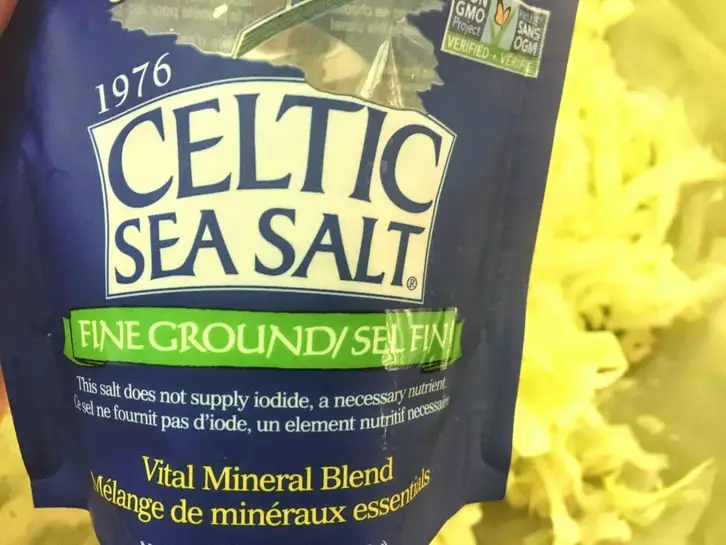
UNCHLORINATED WATER
If you’re like me and are on city tap water, you’ll want to boil your water to degas it. According to Mason Tops, you will want to boil your water for 20 minutes, which is something I’ve been neglecting to do.
Chlorine has a negative impact on ferments and doesn’t always play nice, so it’s best to leave it out of the equation.
WHAT CAN I EXPECT WHEN I MAKE FERMENTED CARROT STICKS?
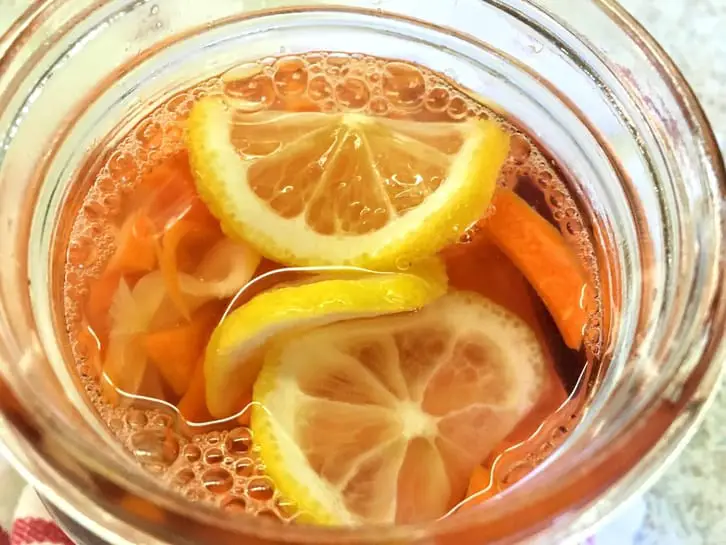
Unlike cabbage, there’s no way you’re going to massage a brine out of carrot sticks. You will need to make a brine to help the carrots along.
If you’re boiling your water to degas the chlorine, make sure it cools down. The brine needs to be at room temperature before adding it to the carrots.
After a few days, the brine will turn cloudy. This is normal!
It will take one or two weeks for your carrots to be ready. Label the jar so you know when to sample them.
Yeast has a thing for carrots. If you find a layer of scum when you open up the jar, it’s likely yeast. Don’t panic. Skim it off and proceed to taste.
When the carrots are sour enough for you, transfer them to the fridge to slow down fermentation.
A COUPLE OF EASY SPINS ON LACTO-FERMENTED CHILLI LEMON CARROT STICKS
This recipe is very forgiving as long as you have good brine. For a more colourful jar of carrots, use heirloom varieties to get a special pop of colour.
If you have Meyer lemons kicking around, slice one of those up.
Are you a fan of spicy foods? Turn up the heat a bit! Crush the peppers before you add them to the jar, or add more to the carrots.
If you want to deviate completely, here are some…
FLAVOURING IDEAS
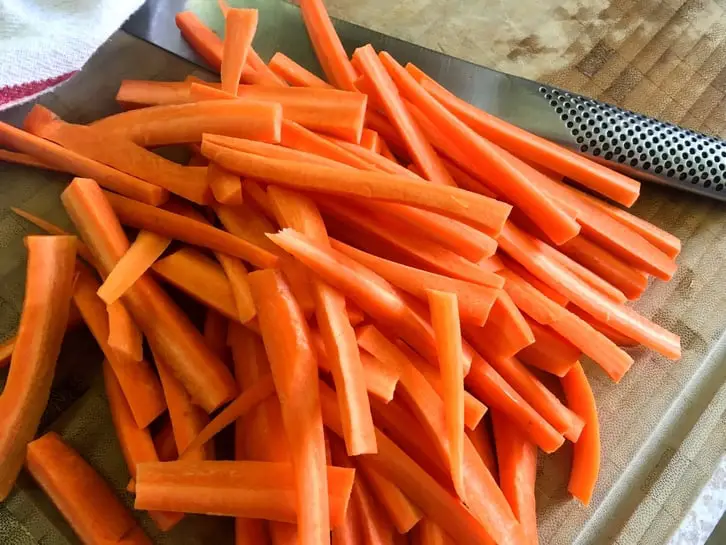
Chilli lemon is my favourite combination when it comes to carrot sticks, but it doesn’t need to be the end-all. There’s a whole world of flavour possibilities out there!
Here are a few ideas that you can swap the chilli and lemon out with:
Dill and garlic.Turmeric and ginger.Lemongrass, ginger, garlic, and chilli.Juniper berries and ginger.Jalapenos and garlic.
THANK YOU FOR DROPPING BY THE KITCHEN!
Where are you on your fermentation journey? It’s an old-fashioned skill that I’ve been working hard on reclaiming.
I’ve learned a lot, but I still have such a long way to go!
Do you think you’ll try these out with chilli lemon or with another combination? I hope you’ll let me know how it turns out in the comments below!
SHOP THIS POST
OTHER FERMENTS YOU MIGHT LIKE
How to make sauerkraut from scratch
Making beet kvass (an old-fashioned tonic)
LACTO-FERMENTED CHILLI LEMON CARROT STICKS INGREDIENTS
1 pound carrots, peeled and cut into sticks
1 quart/litre unchlorinated water
1/8 cup Celtic sea salt
1/2 tbsp raw sugar
1-2 dried chillis
3-4 lemon slices
LACTO-FERMENTED CHILLI LEMON CARROT STICKS INSTRUCTIONS
If you don't have access to unchlorinated water, begin by boiling some water to allow the chlorine to evaporate.Stir the salt and sugar into the water.Fill a quart/litre -sized mason jar with the carrot sticks.Add the chillis and lemon slices to the jar.Pour the brine into the jar, covering the contents, but leaving space for the weight to fit in.Weigh down the contents of the jar and cover it with an airlock or with a regular lid. Place the jar on a baking sheet.Allow the carrots to ferment at room temperature for 1-2 weeks. The brine will turn cloudy, at which point give the carrots a taste. If they're tangy enough, move them to the refrigerator.
PRINTABLE LACTO-FERMENTED CHILLI LEMON CARROT STICKS RECIPE CARD
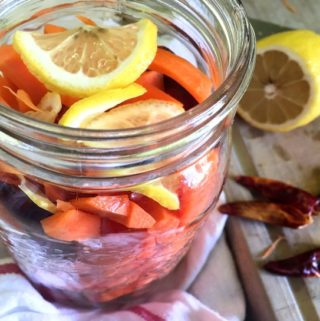
Lacto-Fermented Chilli Lemon Carrot Sticks
Equipment
- quart/litre-sized mason jar
- a weight
- lid or airlock
- screw top
Ingredients
- 1 pound carrots peeled and cut into sticks
- 1 quart/litre unchlorinated water
- 1/8 cup Celtic sea salt
- 1/2 tbsp raw sugar
- 1-2 dried chillis
- 3-4 lemon slices
Instructions
- If you don’t have access to unchlorinated water, begin by boiling some water to allow the chlorine to evaporate.
- Stir the salt and sugar into the water.
- Fill a quart/litre-sized mason jar with the carrot sticks.
- Add the chillis and lemon slices to the jar.
- Pour the brine into the jar, covering the contents, but leaving space for the weight to fit in.
- Weigh down the contents of the jar and cover it with an airlock or with a regular lid. Place the jar on a baking sheet.
- Allow the carrots to ferment at room temperature for 1-2 weeks. The brine will turn cloudy, at which point give the carrots a taste. If they’re tangy enough, move them to the refrigerator.
Notes
PIN IT FOR LATER
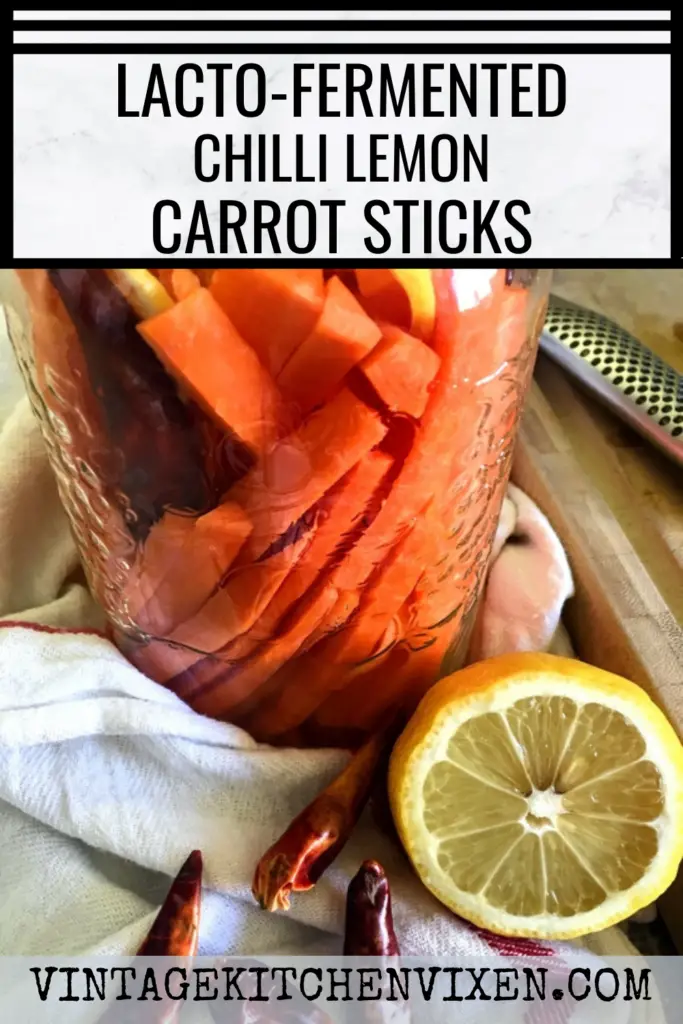
Love and gratitude,



Leave a Reply